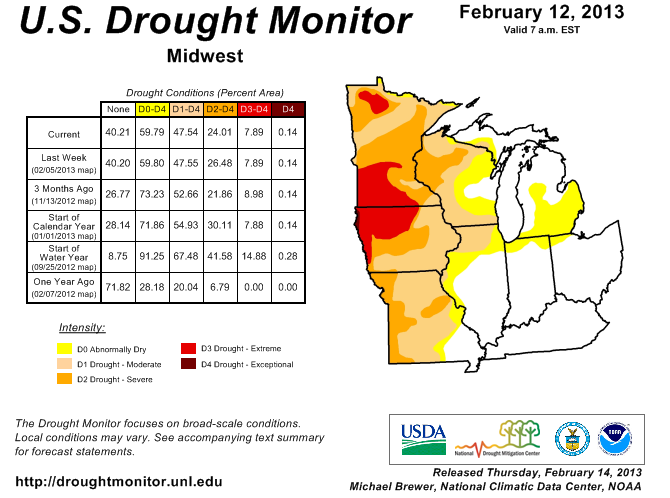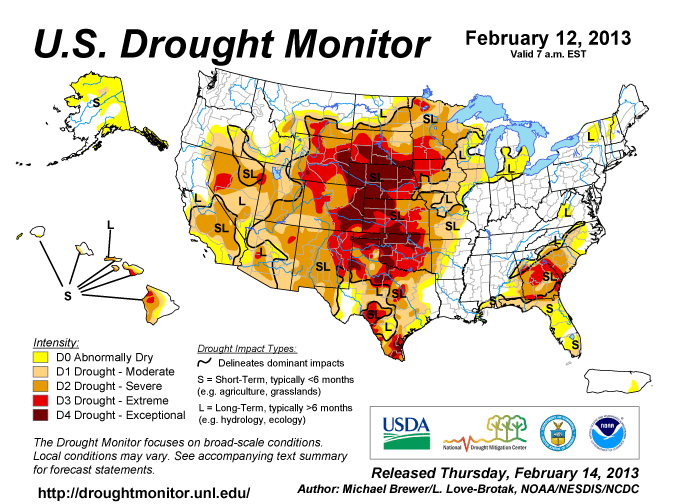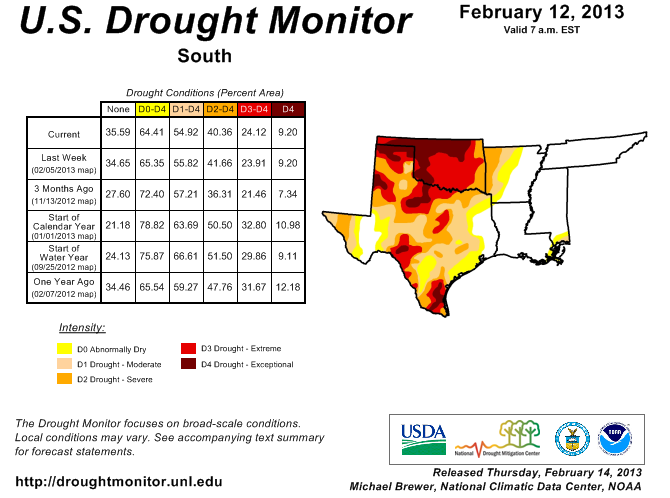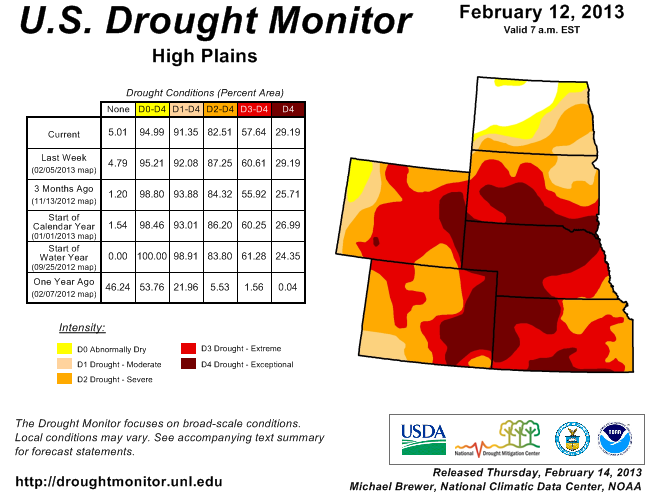Drought Monitor Reflects Minor Improvement

According to the National Drought Monitor, 65.89% of the nation is covered by drought, which compares to 67.97% last week and 57.02% last year at this time. A majority of the Midwest is still covered by drought, as 40.21% is drought-free, compared to 40.20% last week.
The monitor notes that conditions continued to improve in the Upper Midwest and Northern Plains. "Widespread snowfall in the eastern Dakotas and across Minnesota led to improvements in Extreme (D3) and Severe Drought (D2) conditions in that area. Additionally, southwest Missouri saw some improvement in Severe Drought (D2) conditions," it states.
 Across the South, 35.59% is drought-free, compared to 34.65% last week. All of Oklahoma is covered by drought, with nearly 40% covered by "exceptional" drought.
Across the South, 35.59% is drought-free, compared to 34.65% last week. All of Oklahoma is covered by drought, with nearly 40% covered by "exceptional" drought.
Only 10.84% of Texas is drought-free, with nearly 8% covered by "exceptional" drought, which is unchanged from last week. "Improvement was made this week in Extreme Drought (D3) in eastern Oklahoma and Kansas. There was also improvement in Severe (D2) and Moderate Drought (D1) and Abnormal Dryness (D0) across eastern Texas while areas of southern Texas and the Panhandle saw small expansion of Exceptional (D4), Extreme (D3), and Severe Drought (D2)," notes the monitor.
All of Kansas is covered by some form of drought, with 36.16% being "exceptional" drought, which is unchanged from last week.
In its forecast for February 14-18, the monitor states, "There is a suppressed probability of precipitation across nearly the entire US, with the exception of isolated locations along the East Coast focused mainly in northern New England and in south Florida. Temperatures are variable throughout this time period. Initially, above-normal temperatures are expected from the Ohio Valley through the Southern Plains and along the West Coast. These temperature are expected to migrate eastward and by the end of this period, the above normal temperatures will have moved from the West Coast, across the Rockies, and into the Great Plains once again."










